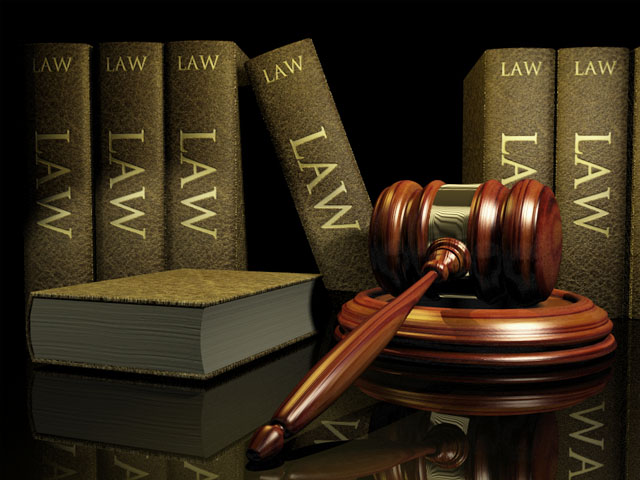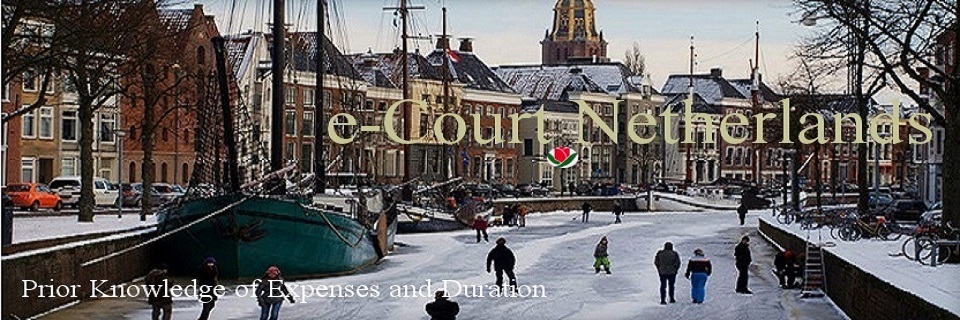Three fields of law with respect to valuable rights (in continental law and Anglo-American law)
Where it concerns the law related to assets and commercial and financial relationships (the law of 'valuable rights’, also called ‘patrimonial rights’), three different fields of law can be determined in continental law as well as in Anglo-American law:
a. property law;
Property law regulates the rights and powers of persons to all objects, for instance to a house, a car, but also to adebt-claim against a particular debtor, which may be regarded as a property item of its own. Two kinds of property rights may be distinguished: real property rights ('rights in rem') and debt-claims ('rights in personam'). A characteristic of a real property right is that its holder – the proprietor – is able to uphold and enforce his powers to the related object against everyone, thus against the whole world, irrespective of who owns the object or who has another interest or title in it. Such property rights, therefore, have ‘real effect’ (effect in rem). The proprietor of a real right to (or in or on) an object isn’t affected when the owner of that object sells and transfers it to another person. The new owner must respect the already existing real property rights in this object. Furthermore, an older real property right isn't affected in anyway by a property right that is established later on the same object. Debt-claims are property rights as well, yet without real effect. They can only be enforced against the debtor.
b. the law of obligations;
The law of obligations regulates the relationship between a creditor and a debtor, thus between two persons with regard to a certain performance which has to be carried out by one of them and which may be claimed by the other. An obligation can only be upheld and enforced against one person, namely against the debtor who has to fulfil the performance. Since no other person can be held accountable for this performance, the right of the creditor (which has arisen from an obligation and, therefore, is called a debt-claim) has only a relative effect, as far as it concerns the debtor (effect in personam). The law of obligations is a special field of law, related to the law of contract and the law of tort. The legal effect which results from these acts is an obligation. An obligation is a legal bond between two people, the debtor and creditor, consisting of a debt-claim and an accompanying debt. The law of obligations regulates how the proprietor of the debt-claim (creditor) and the person who owes the debt (debtor) have to behave mutually towards each other within that legal bond. But if one looks at a debt-claim from a different angle, one could say that it's also an independent property right in itself, which for instance can be transferred by its proprietor - the creditor – to a third party and which can be encumbered with a pledge or a usufruct on behalf of another person. Yet, it has no real effect.
c. the law of intellectual property;
The effect of intellectual property rights is, just as that of the earlier mentioned property rights in rem, 'real', so that the holder of an intellectual property right can uphold and enforce it against the whole world. With this, these rights look a lot like ordinary property rights. The object of an intellectual property right, however, is always an intellectual idea in itself (and therefore not the material through which this idea reaches expression). The object of a patent is for instance an invention (not the machine that is made according to this invention), while the object of a copyright is a story (not the book or film which tells the story) or another artistic composition (not the picture, photo or CD that has captured this composition) or an industrial name or logo (not the paper or advertisements of the company) et cetera. The holder of an intellectual property right is able to enforce his right to that intellectual object against everyone. No one is allowed to use his idea, thought, story, composition, trade mark et cetera without his permission.
The first two fields of law - property law and the law of obligations - are tied to each other. The legal basis on which a property right is established, transferred or encumbered is usually an obligation. And the debt-claim which arises from an obligation forms in itself a property right that can be transferred to another party and that may be encumbered with a limited property right. This applies both in continental law and Anglo-American law. The approach of property rights and also of obligations, however, differs in Anglo-American law essentially from continental law.
The intellectual property rights are mainly governed by International Conventions and, for this reason, they aren’t characteristic for Anglo-American law, nor for continental law. That's why they want be discussed here any further. Nevertheless they are strongly linked to the law of obligations, since this legal figure usually forms the basis of the creation, transfer, encumbrance or use of an intellectual property right.
Property law in continental law and Anglo-American law systems
The conclusion is that continental systems as well as Anglo-American law systems distinguish property law and the law of obligations as a separate field of law. In both systems these fields of law have mutual connections. But with this conclusion, the similarities stop. The structure of property law and the law of obligations in Anglo-American law differs in many ways from that in continental law countries, which can be explained by historical and methodical causes.
In Roman law the distinction between movable and immovable property was not significant. That's why in continental law countries, at least in theory, the nature of the object to which a property right is related, plays no part at all. The right of ownership of a bicycle and that of land are largely the same. Both owners may exercise the same powers to the object of their property right. And when the object is actually in possession of someone without a right or title, both owners may claim their property back with the same action (in the Netherlands: the right to claim the return of property of Article 5:2 DCC). This fundamental character causes that continental law systems have a uniform structure for all property rights, irrespective of the nature of the object to which these rights are linked. There are a number of general rules for the acquisition, the transfer and the loss of property rights, which together form a consistent structure of legal statutory provisions, and that together produce the field of property law. This has lead to a limited number of different property rights and no possibility for citizens to create newly invented property rights in rem of their own ('closed system'). This legal system is written down in statutes. Characteristic for civil law in continental countries is that it's shaped around a central Civil Code that forms the heart of all civil law.
Very important in this system is the knowledge that one property right stands above all others, as being the main property right from which all other property rights in rem descend. This, of course, is the right of ownership. In continental law countries this is the most comprehensive right with respect to an object. The owner can exercise all powers concerning the use and enjoyment of the object, including the right to earn all of its fruits (benefits). He can also transfer the object to another person. He is even allowed to destroy it, provided he doesn't harm other people or their property in the process. All property rights in rem are split off of this principal right. The property rights that have been split off, are called 'limited real rights' and form, together with the stripped right of ownership, all rights and powers within a full right of ownership. So when a split off limited real right ends, the stripped ownership automatically grows back to full ownership. The same happens when the owner of the stripped ownership becomes the proprietor of a limited real right that previously had been split off of his principle right. Then this limited real right ends automatically and the stripped ownership immediately transfers back to full ownership. So the involved person doesn’t possess two different property rights, a stripped right of ownership and a split off limited real right, but again one full right of ownership.
Dutch property law regulates the legal relationship of a person to various kinds of objects with regard to the whole world (rights in rem). Dutch law only knows eight different kinds of real property rights. They are always linked to a specific object in the sense that they give its proprietor one or more real rights and powers with regard to that object. These rights can be upheld and enforced against everyone who encounters or could encounter the object to which the real property right is attached. When someone actually runs into this object, he must avoid actions which could disturb the proprietor in exercising his real rights and powers. If not, the proprietor has the possibility to ask the court to order the offender to stop his disturbing behaviour and to pay damages.
e-Court handles civil cases in accordance with either the common and/or the civil-law traditions in the Netherlands
(continued 2/3)

-
TOPICS:
- HOW IT WORKS
- home
- preliminary information
- introduction
- small claims court
- e-Court, how it works
- CIVIL LAW
- standard procedure
- appeal process
- hearings
- a legally binding verdict
- member of e-Court
- join e-Court
- terms, rules & regulations
- find a lawyer
- ( demo : Preliminary info )
- ( demo : The Standard Procedures )
- ( demo : The Appeal Procedures )
- OFFLINE NETWORKING
Endorsements ( 1/2000 + ):
- Miller Thomson LLP
Gerald Chipeur, QC, Partner Calgary, Alberta - Adair
Morse LLP
John Adair, Toronto, Canada Area Law Practice - Bart
Law
Jaqueline Bart, Canadian Immigration Law - Clancy P.C. & Brion Raffoul
Paula Clancy, Managing Attorney at Clancy P.C.& Brion Raffoul, Ottawa Legal Services - FreemanLaw -
Barristers
Derek Freeman, Toronto, Ontario, Law Practice - Abrams &
Krochak-Lawyers
Toronto, Ontario, Law Practice - Partner,
Gilbertson Davis Emerson LLP
Past President, Ontario Bar Association - George A.
Bougadis
Toronto, Ontario, Canada Law Practice - Rick
B
Calgary, Canada Area Industry Law Practice -
Patrick Cormier
Canadian Centre for Court Technology Montreal, Quebec, Canada - Jonathon Baker
Toronto, Canada Area Law Practice - Patricia M. Swerhone
Waters and Associates, Barristers & Solicitors, Toronto - Kenneth J. Byrne
Immigration and Real Estate Lawyer at Benson Buffett, Newfoundland And Labrador - Amy M. Crosbie
Partner at Curtis, Dawe, Newfoundland And Labrador - Justice Clark
Partner at Simmons Da Silva + Sinton LLP, Toronto - Stanley Potter
Owner, Stanley J. Potter, Barrister & Solicitor, Toronto - Phil Birss
Group Marketing Manager at NRL - Robert Cornish
CEO at Richter Group of Companies - Michelle Findlay
Group Marketing & Partners Director ITS Technology Group - Dyanne Fries
CEO - Design, Print and Digital Publishing - David Achim
CEO/President at SkyFiber, Inc. - Brian Adams
Manager Proposals/Business Development at Leebcor Services, LLC. - Julian Alcolea
Director de Administración Pública en Efron Consulting - Tahar Ali-Yahia
Founder, Corporate Leadership NexGedia Enterprise - Anthony Argenziano
Head of Technology eBay Enterprise - Anthony Argenziano
Head of Technology eBay Enterprise - Mike Arnold
Managing Director specializing in the logistics of Global Mobility, Records Management and 3PL across Asia Pacific. - Matteo Arru
Knowledge Management Officer European Institute of Innovation and Technology - EIT. - Victor Artemiev
Vice President (investment & business development) at Eurasian Development & Management Company - Robin Austin
Executive Strategy & Planning, Market Strategy Marketing Business Development Strategy Marketing Business - ( Endorsements continued.....)















